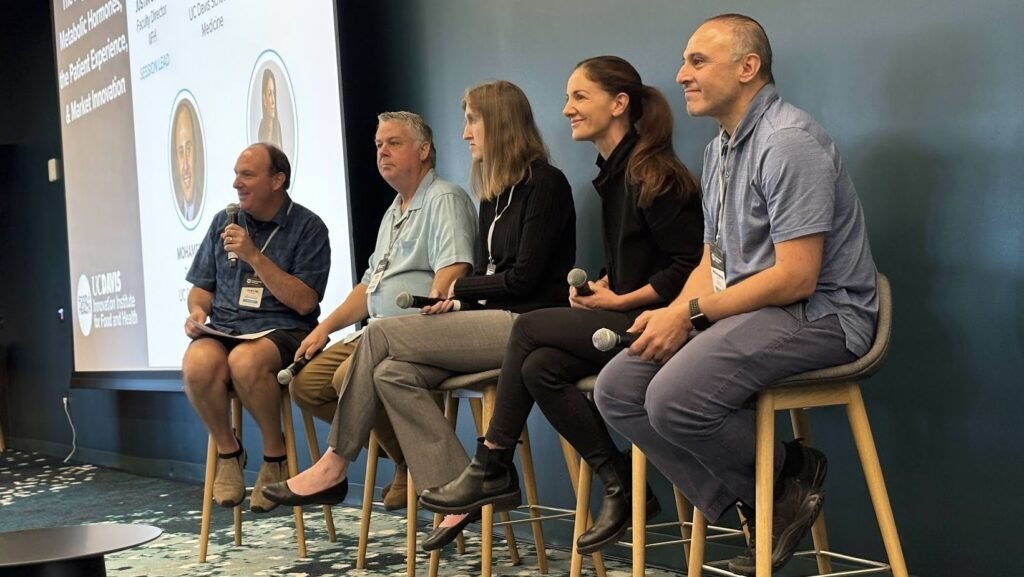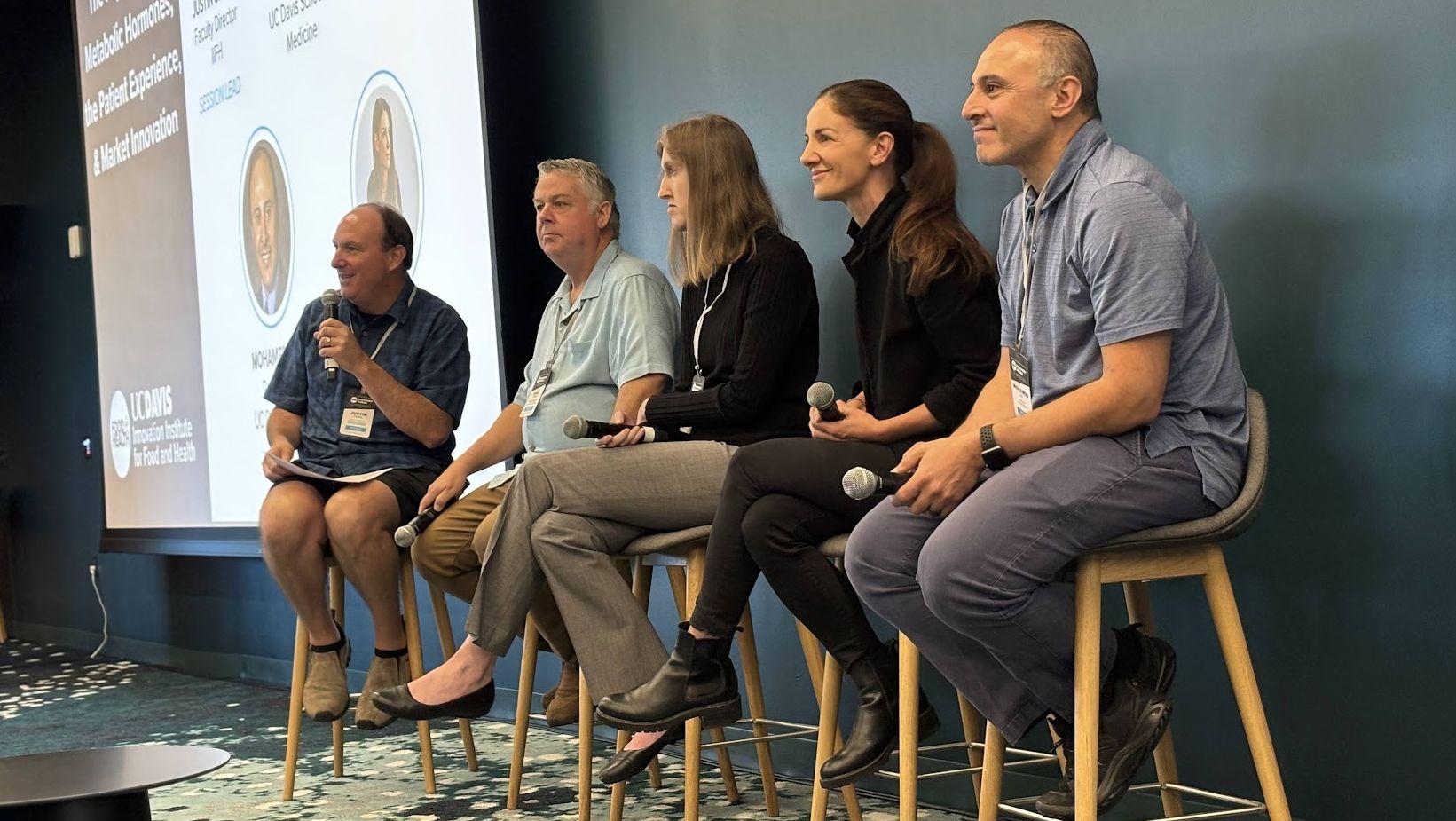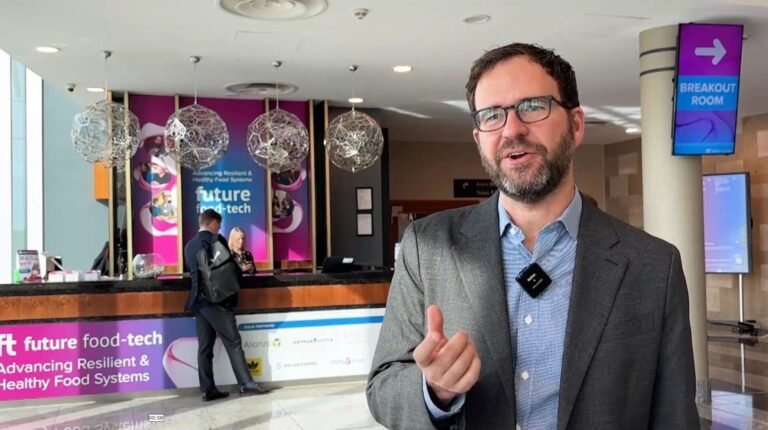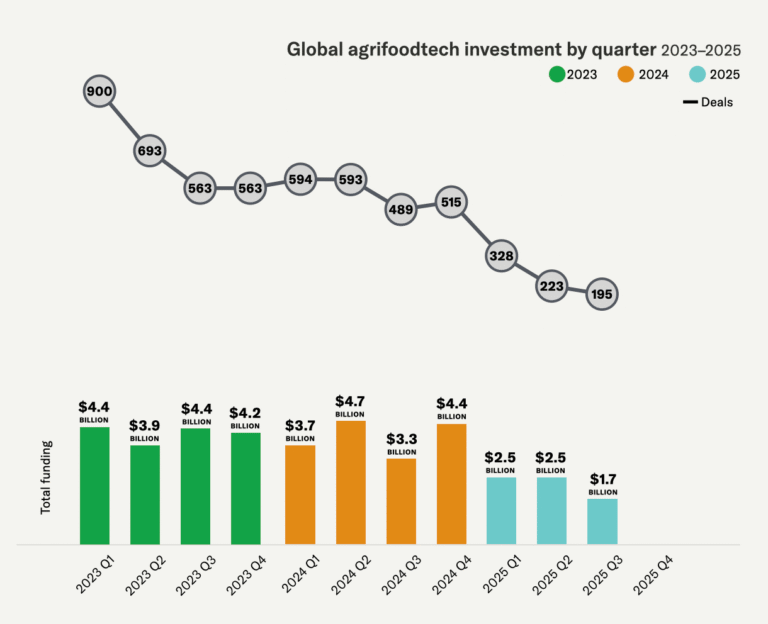
“No one knows exactly what is the impact of these new [GLP-1 receptor agonist] drugs Ozempic or Mounjaro… but something is happening because protein overall became [a trend],” JBS meat magnate Wesley Batista observed at Rothschild’s consumer conference in London last month.
The data suggest a slightly more nuanced picture, as protein was hot long before GLP-1 drugs hit prime time (despite the fact that most Americans get more than enough), while some GLP-1 users report reduced consumption of fatty meats.
However, there’s no doubt that GLP-1 drugs are accelerating interest in protein to address the loss of lean muscle mass associated with rapid weight loss from these drugs. And startups are now offering solutions from enzymes that increase protein absorption (Amplifye) to “insanely soluble” proteins (Alpine Bio) enabling formulators to pack ever greater amounts into snacks and beverages.
Others, meanwhile, are attempting to play in the space between food and pharma with a new category of ‘biomimetics’ that activate GLP-1 and other receptors such as GIP that are associated with appetite regulation.
‘Protein is the Taylor Swift of nutrition right now’
While GLP-1 receptor agonist drugs have not yet had seismic effects on the food industry, the second wave, which should be better tolerated and easier to consume, is likely to drive wider adoption, predict experts. And food companies better be ready, said Dr. Kim Fisher, director of programs at the UC Davis Innovation Institute for Food and Health (IIFH).
Speaking at a discovery forum on GLP-1s hosted by IIFH in Sacramento, California earlier this week, she said: “There are over 100 clinical studies in the pipeline right now with about 40 in phase three, meaning we’ll see new things on the market in the next year or two, from weekly pills to monthly injections. The benefit of combination therapies [‘multi-agonist’ drugs that activate GLP-1, GIP, and glucagon receptors] is you have fewer side effects. This is a pivotal moment for the food industry.”
Noting that 12% of the US population has tried the drugs, with 6% actively using them, Harold Schmitz at VC firm The March Group said the “Ozempic era” is helping to rejuvenate the foodtech space, which is “now very much alive.”
Courtney McHugh, chief commercial officer at Amplifye, a UC Davis spinout with an enzyme that helps the body digest protein more effectively, added: “There’s an entire secondary market that can come from any breakthrough technology.”
This is only the first generation of GLP-1 drugs and therefore the first generation of secondary markets, observed McHugh, who said GLP-1 drugs are driving interest in “products that solve for energy levels, nutrient deficiencies, and gut issues.” They are also prompting renewed interest in protein quality as well as quantity, she claimed.
“Protein is the Taylor Swift of nutrition right now. But people are peeling back the layers and asking what are good sources of protein for me?”
Protein absorption
Amplifye’s P24 enzyme is “a phenomenal companion product to anyone on GLP-1,” claimed McHugh, who said P24 starts working in the stomach and cuts protein in a different manner than pepsin, creating unique amino acid signatures.
“First and foremost, you tend to lose 20-30% of your lean muscle mass when you’re on GLP-1; people have a hard time getting enough protein in their diet and enough leucine in their muscles. P24 unlocks that and really increases your absorption rate of the protein you’re already eating. It also helps with some of the digestive side effects.”
Cofounder Dr. Justin Siegel told AgFunderNews: “Pepsin is pretty good at breaking down many proteins, but there are a lot of proteins it does not break down, so when we started Amplifye we were looking for enzymes that were particularly good at breaking down the proteins that humans aren’t good at breaking up.
“It’s about more efficiency, more amino acids, getting more from every bite you eat. But we have to translate that [into something meaningful] for consumers. Does that mean you’re sleeping better? Recovering from a workout faster?”
Weight maintenance, micro-dosing, changing tastes
Many formulators are now developing high-protein, nutrient-dense, portion-controlled products for people taking GLP-1 drugs, coupled with products designed to address nausea and gastrointestinal side effects. However, the bigger opportunity is potentially in helping people maintain weight loss after coming off the drugs, Dr. Justin Shimek at product innovation firm Mattson told AgFunderNews at the sidelines of the IIFH event.
Shimek, who has been working with multiple food companies developing new products or re-positioning existing ones, said many consumers in this situation are also micro-dosing, or taking the drugs intermittently. “Once consumers get to their goals and are in this sustaining mode, how might we continue to support them?”
As for changing taste preferences, he said, “We’ve done a lot of research with GLP-1 consumers, and there’s a reduction in food noise, but even more interesting is that we hear consumers talk about how their tastes and preferences are shifting. Things that they love, certain food products or experiences, they just aren’t as motivated by anymore.
“It seems like depending on the individual patient there is some variability, however, so what we’re interested in is to see if there are some themes that develop, especially if we get to a steady state where 25% or more of the population is on these medications.”
He added: “Given the scale and the size of the opportunity, the food industry is taking some time to react, but now it’s certainly waking up and moving quickly.
“There are a lot of products out there that already probably check the box on a lot of what would be a good GLP-1 companion product: protein, fiber, macronutrients, portion size… but figuring out how to communicate to [GLP-1] consumers in a more nuanced way is important. Answering those questions around: Do I create a new brand? Do I create a sub brand? Do I create a ‘GLP-1-friendly’ badge? And since that’s not regulated by anyone, what does that mean?”
Ultra-processed GLP-1 companion foods?
In general, GLP-1 drugs are accelerating trends (protein, fiber, nutrient density, portion control) that are already driving food formulation, said Scott Forsberg, COO at WellVine, which makes products containing prebiotic fibers from upcycled wine grapes.
“The thing I am really intrigued about isn’t just selling to GLP-1 users, it’s getting other people to eat like GLP-1 users do. That would be a seminal change.”
While many GLP-1 companion products would likely sit in the “ultra-processed” category under classification schemes such as NOVA, he said, he hoped US regulators would “have the wisdom not to create a system which focuses too much on the process and too little on the composition.”
Nature’s Ozempic…
As for “Nature’s Ozempic” opportunities, the space is challenging, said Dr. Sean Adams, vice chair for basic research at the Department of Surgery at UC Davis.
“[Naturally-produced] GLP-1 is degraded pretty rapidly by an enzyme called DPP-4. That’s what prompted the generation of new drugs like semaglutide, which are protected from DPP-4 degradation by manipulations of some of these amino acids and adding a fatty acid and a carrier.
“The drugs themselves are very different from the natural hormone [GLP-1]. If you look at the concentrations, they are about 1,000-fold higher than what you’d see for the natural hormone. I just wanted to point that out as it may have us think a little bit differently about foods where we’re trying to activate GLP-1 release. Is that actually going to be enough to have an effect relative to the drug? I don’t think so personally.
“The take home message is the pharmacokinetics and blood levels differ significantly between natural and pharmacologic agents.”
The role of the gut microbiome
That said, the more we understand about the biological systems at play, the more we can come up with multi-pronged strategies to support appetite regulation that don’t necessarily involve drugs, said Dr. Carlito Lebrilla, a professor in the Department of Biochemistry and Molecular Medicine at UC Davis.
One approach might be to identify microbes that naturally produce peptides that activate GLP-1 receptors, and then try to understand how to feed them to keep them happy and productive, for example, he said.
“Say a microbe creates a certain compound that you want with a certain property. If you can feed it, you can have 24-hour production [of that target compound]. Having your own body, your microbes, do it is more beneficial than taking it externally. It’s like insulin. Sure, we can give you insulin, but you would rather create it on your own.
“I think it’s much more effective and natural if you know which bug produces GLP-1-like proteins or peptides, and if you can meter it and actually feed it so that it just gives it to you, that’s the future.”
People often say probiotics (a.k.a. “good” bacteria) that we buy over the counter don’t colonize the gut, he said, but maybe they would if we found out what to feed them.
“It’s like you buy a puppy and say I’ll give you the run of the house, but I won’t feed you. And then if that dog doesn’t survive a week later, you go buy another one. That’s how probiotics are today. We take the probiotic, but we don’t actually feed it, because we don’t know what to feed it. But if you feed it the right food, it should stick [around in your gut].”
Fellow speaker Dr Ilan Zipkin, CEO at startup Supercede Therapeutics, added: “I think we’ll test lots of different combinations, both of food responsive hormones but also other mechanisms, so that five years from now, we will be stunned at how little we’ll need GLP-1 [drugs] anymore.”
Riccardo Locascio, head of partnering, advanced proteins, at biomanufacturing giant Novonesis added: “Can you design personalized proteins that can actually bind in the gut and provide benefits to consumers?”

Personalized public health?
Dr. Adams added: “Deep nutritional phenotyping is something we’re going to be doing in the new center we’re building here on campus, and that is to take each individual through the door and acquire thousands of data points about that person from genetics to the microbiome. Because we can’t assume that everybody in this room is going to respond the same way to the same intervention.
“So I think that’s in the future, this deep nutritional phenotyping, and then using mathematics and AI to cluster people into particular groups. Some of us believe that once we do that, there will actually be food offerings … you will be on a red diet, you will be on a green diet, you will be on a blue diet. So when you go to the store, you choose diets that seem to be more appropriate for you. Is that practical on a population level? Not yet, but I think that’s where we’re headed.”
While some commentators have queried whether precision nutrition can really move the needle on public health, he added: “I do think we’re going to get to a point where there’s going to be personalized public health.
“I think we’re going to have AI-based dietitians. Just like in medicine, there’s going to be AI based interfaces with customers that can help guide them on their path as they go through this process. For that reason, I do think it’s probably going to be scalable to hundreds of thousands if not millions of people eventually.”
Further reading:
Evolv launches peptide that engages GLP-1 receptors as new ‘biomimetics’ category emerges
Where Siddhi Capital is placing its bets: ‘GLP-1 is our AI. It’s a huge opportunity’
‘Pharma is eating Big Food’s lunch…’ Lembas fights back with GLP-1 boosting peptide
GLP-1 drugs are rewriting America’s food preferences, says IFF: ‘GLP-1s alter taste perception’
The post Food formulation and precision nutrition in the Ozempic era: ‘There’s an entire secondary market that can come from any breakthrough technology’ appeared first on AgFunderNews.

